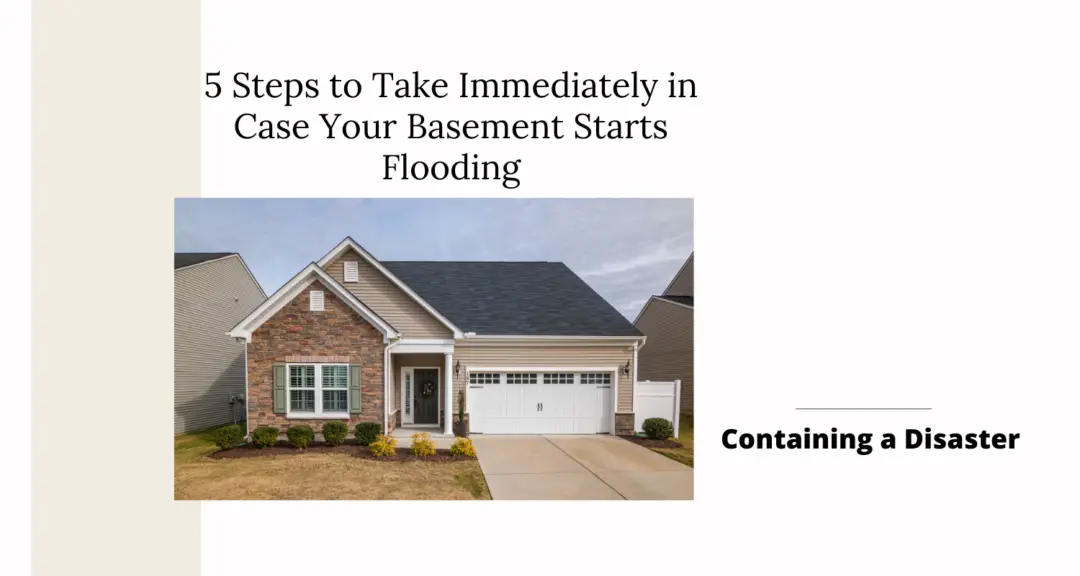
Containing a Disaster: 5 Steps to Take Immediately in Case Your Basement Starts Flooding
No one wants their basement to get flooded. But, if the basement is flooding, there are things a homeowner can do to limit the damage. If a basement is in an area prone to high water and flooded basements, the home might benefit from having a sump pump installed. There are signs to look for that indicate the basement has moisture problems and might be susceptible to flooding. A sump pump is designed to keep a basement dry by pumping water out of the basement through a pipe and away from the foundation.
How Can You Tell If a Basement Has Moisture Problems?
Homes with basements might already have a sump pump. But, what if the sump pump is not doing its job? Sump pumps need servicing periodically, they wear out, and they can get clogged and not drain correctly. If a homeowner notices water stains, standing water, a damp or musty smell, or sewage like small, it is time to have a plumber or damp basement expert investigate. The homeowner can get more information from companies such as WaterWorks Plumbing in Toronto.
When a Basement Floods Do This
When the basement is flooding there are steps to take to reduce the damage caused and be safe.
1. Don’t charge into a flooded basement, use caution. First, call an electrician and someone who is experienced in fixing flooded basements safely. If the circuit breaker box or fuse box is not in the basement, go to it and shut off the electrical power.
2. Remove all the water. If there is a sump pump, it has failed and must be repaired. If there is no sump pump, other means must be used to remove the water. Usually, the homeowner will call the local plumbing company or wet basement expert. It is very important to remove the water as soon as possible to avoid more damage and mold growth.
3. Now, it is time to remove all the wet objects in the basement. This can include upholstered furniture, clothing, books, carpets and padding, wooden furniture, electronics, and more. If the floor has wood or similar flooring, it may also need to be removed. Once these items are outside or in the garage they can be dried out, or disposed of. Contact the insurance company representative. Insurance claims can be made.
4. Dry the basement out as quickly as possible using fans, blowers, dehumidifiers, and other equipment. It is important to dry everything thoroughly to avoid mold and mildew. Wash all walls and floors with soap, warm water, and a little bleach to stop mold growth. Consider running a HEPA air cleaner and filter to get rid of allergens and mold spores.
5. Figure out what caused the flood and take steps to prevent future flooding events. This step requires the services and knowledge of a professional plumber or damp basement expert. Did the sump pump fail? Do you need a sump pump installed? Was there a big rainstorm that flooded the yard and basement? Does the basement have cracks in its foundation or walls? Does the basement need professional waterproofing?
Preventing Future Basement Flooding
To prevent future flooding, in addition to a good sump pump, take a few additional steps. Look around the exterior of the home for debris-filled gutters, low places near the home that could collect water, a lot that slopes toward the house instead of away from it, and correct these problems. Are there basement windows that are not properly protected? Basically, find anywhere water could be getting into the home and correct the situation.
Preventing basement flooding is a lot less expensive than paying to restore a flooded basement.



No Comments